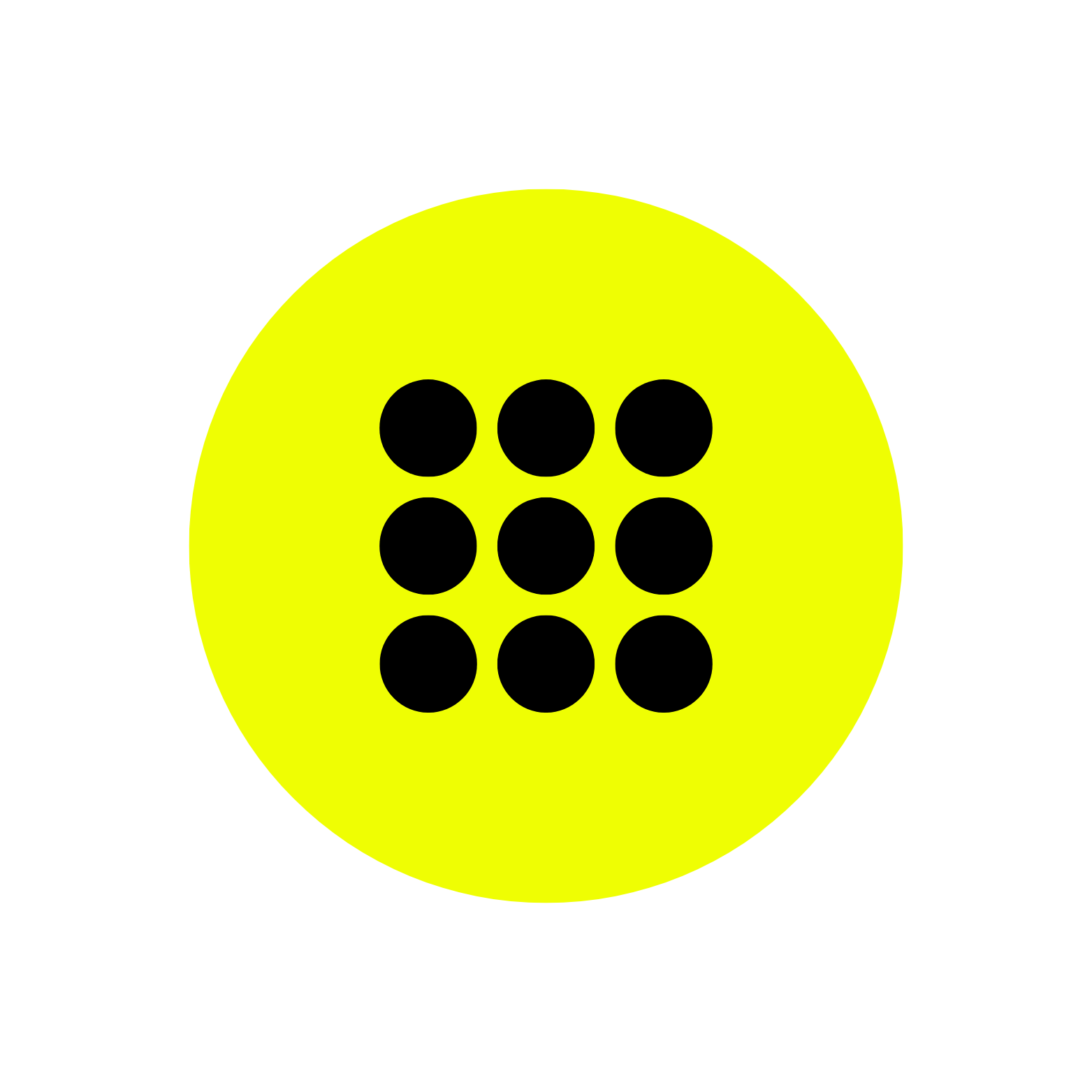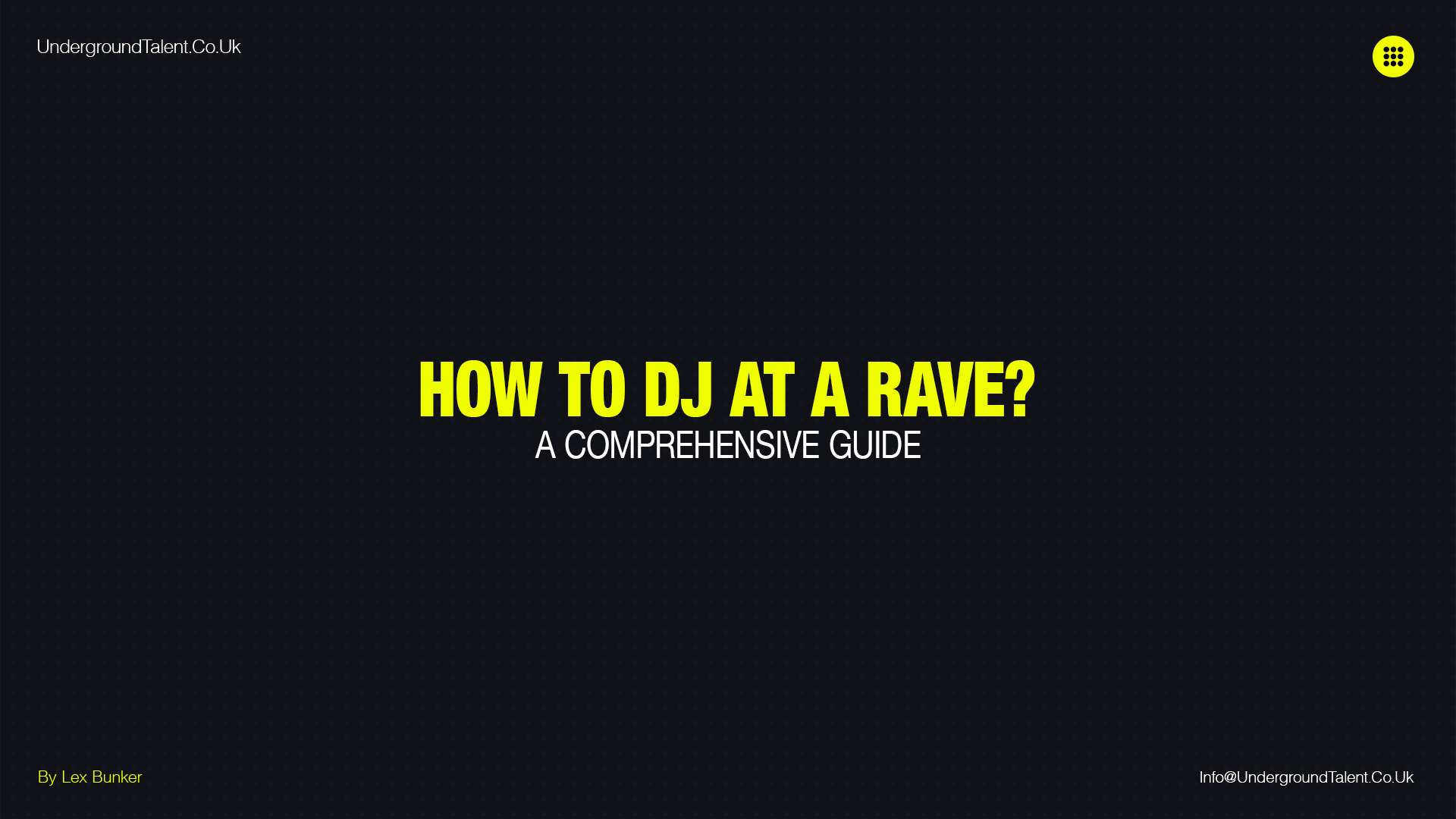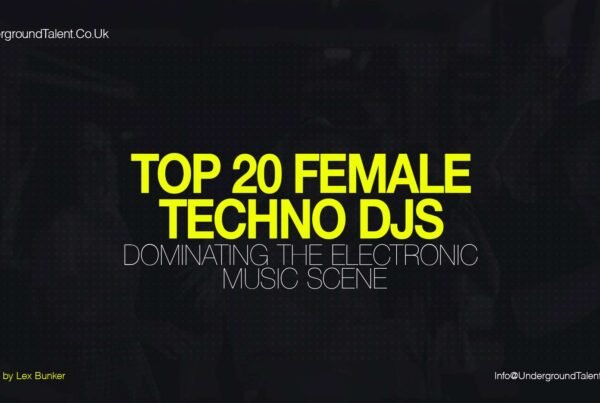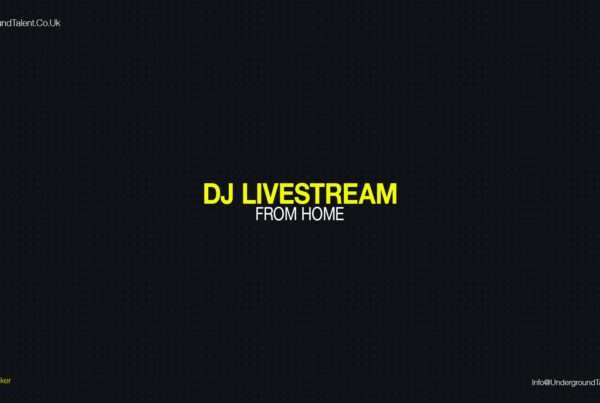Introduction: How to Become a DJ at a Rave
The Basics of Becoming a DJ | How to DJ at A Rave
What It Means to Be a DJ at a Rave: Roles and Responsibilities
Being a DJ goes beyond playing tracks. It involves curating a musical journey for an audience, where each song is a stepping stone to the next. As a DJ, your responsibilities include:
- Music Curation: Select tracks that resonate with the audience, maintaining energy and excitement.
- Technical Skills: Operate DJ equipment proficiently, managing transitions and effects smoothly.
- Crowd Reading: Adapt your music selection in real time to the vibe and energy of the crowd.
- Set Preparation: Plan your music set strategically to build up a climactic energy that engages listeners.
These roles combine artistry with technical prowess, making a DJ essential to the success of any rave or musical event.
Overview of Different DJing Styles Suitable for Raves
Each DJing style brings a unique flavour to raves, catering to varied musical tastes and atmospheres. Popular styles include:
- House: Uplifting and rhythmic, perfect for keeping the dance floor moving.
- Techno: Offers a more intense, mechanical vibe that drives late-night rave sessions.
- IDM (Intelligent Dance Music): Known for its complex rhythms and unique sound design, catering to a thoughtful dance experience.
- Psytrance: Characterized by its hypnotic rhythms and spiritual melodies, ideal for transcendental dance environments.
- Drum and Bass: Fast-paced with heavy bass, ideal for high-energy dancing.
Choosing the right style can define your DJ persona and align your performances with the preferences of rave-goers, ensuring memorable and electrifying nights.
Choosing Your DJ Persona | How to DJ at A Rave
Crafting Your Unique Style and Brand
Developing a distinctive DJ persona is crucial for standing out in the rave scene. Your style and brand should reflect your musical tastes and the image you want to project to the audience. Key aspects to consider include:
- Musical Selection: Choose genres and tracks that resonate with your personal taste and artistic vision.
- Visual Identity: Create a memorable logo and visual theme that will be associated with your performances.
- Stage Presence: Develop a unique way of interacting with the crowd that enhances the live experience.
- Marketing: Utilize social media and digital platforms to showcase your music, share mixes, and connect with fans.
Your style and brand are your signatures as a DJ, making you recognizable and preferred by audiences who share your musical affinity.
Understanding Your Audience and What Makes a Rave DJ Successful
To thrive as a DJ, especially at raves, understanding your audience is key. Knowing what drives the rave crowd and how to cater to their preferences can greatly enhance your performance. Consider the following:
- Audience Preferences: Research the types of music and artists popular in your target rave community.
- Energy Management: Learn to read the room and adjust your music to keep the energy levels high throughout the night.
- Engagement Techniques: Use microphone interactions, song requests, and shout-outs to make the crowd feel involved.
- Consistency: While it’s important to be adaptable, consistency in your music style helps build a loyal following.
A successful rave DJ plays music and creates an atmosphere where the audience feels part of a larger, shared experience. Understanding and implementing these elements can elevate your DJing career to new heights.
Essential DJ Equipment for a Rave
 Image By Trent Haaland
Image By Trent Haaland
The Best Starting DJ Equipment: Controllers, Mixers, and Turntables
Choosing the right equipment is foundational for any aspiring DJ, especially those aiming to rock the rave scene. Start with essentials that blend quality with ease of use:
- DJ Controllers: These are perfect for beginners, combining mixers, turntables, and media players into one device. Popular models include the Pioneer DDJ series and the Numark Mixtrack.
- Mixers: Essential for transitioning between tracks, mixers let you adjust EQs, levels, and effects. The Allen & Heath Xone series offers excellent sound quality.
- Turntables: For DJs who prefer vinyl, turntables offer a traditional feel. The Technics SL-1200 is a reliable choice, known for its durability and precision.
Investing in the right equipment can make learning and performance not only easier but also more enjoyable.
High-End vs. Budget-Friendly: What Suits Your Needs?
Whether to invest in high-end equipment or start with more budget-friendly options depends on several factors:
- Career Aspirations: If you’re aiming for professional gigs and large venues, high-end gear might be a better investment for its durability and advanced features.
- Budget Constraints: Budget-friendly gear is ideal for those just starting out or DJs who perform as a hobby. Brands like Behringer and Hercules offer good quality at lower prices.
- Feature Requirements: Consider what features are essential for your style of DJing. High-end equipment typically offers more features and better performance, which can be crucial for complex setups.
Balancing cost with your specific needs will help you choose equipment that supports your growth as a DJ without breaking the bank.
Learning the Technical Skills | How to DJ at A Rave
Mastering Beatmatching: The Foundation of Seamless Mixing
Beatmatching is a critical skill for any DJ, serving as the foundation for creating smooth transitions between tracks. Key points to focus on include:
- Tempo Matching: Learn to adjust the tempo of two tracks to match precisely, using either pitch faders or sync buttons on digital controllers.
- Ear Training: Develop your ear for detecting phase differences and timing discrepancies between tracks.
- Practice Regularly: Use varied music styles to practice beatmatching by ear to enhance your adaptability during live performances.
Mastering this skill ensures your sets flow without jarring interruptions, essential for maintaining the energy on the dance floor.
Harnessing DJ Software: Benefits of Digital DJing Tools
DJ software has revolutionized the way DJs mix and perform. Embracing these tools can significantly enhance your performance capabilities:
- Broad Features: Modern DJ software, such as Serato DJ Pro, Traktor Pro, and Virtual DJ, offers features like looping, cueing, and effects that add depth to your sets.
- Library Management: Software can help organize and manage your music library, making track selection more intuitive and efficient during live sets.
- Hardware Integration: Most DJ software seamlessly integrates with various controllers and mixers, allowing for a more flexible and customized setup.
Utilizing DJ software effectively can elevate your performances by providing creative control and operational ease, essential for a successful DJ career, especially in dynamic environments like raves.
Understanding Electronic Music Genres
 Image by Alexander Popov
Image by Alexander Popov
Identifying Genres That Dominate the Rave Scene
Raves are known for their diverse and vibrant selection of electronic music. Understanding and identifying the key genres that dominate the scene can significantly influence your success as a DJ:
- House: Often features rhythmic basslines and catchy melodies, a staple for its upbeat and inclusive vibes.
- Techno: Known for its repetitive beats and progressive structure, techno is a favourite for its ability to sustain energy levels throughout the night.
- IDM (Intelligent Dance Music): More experimental, IDM appeals to those looking for complexity and depth in music.
- Psytrance: With its fast-paced beats and layered melodies, psytrance is designed to take listeners on a psychedelic journey.
- Drum and Bass: Characterized by its fast breakbeats and heavy bass, drum and bass is energetic and powerful.
Exploring these genres will help you better connect with your audience and tailor your sets to the rave’s dynamic atmosphere. For a deeper understanding of one such influential genre, consider reading about techno music and its sub-genres.
Adapting Your Set to Fit Different Rave Environments
Each rave environment presents unique challenges and opportunities for a DJ. Adapting your set accordingly is crucial for success:
- Indoor vs. Outdoor: Outdoor events might require more vibrant and loud selections compared to the nuanced sets suitable for indoor venues.
- Time of Set: Daytime slots might benefit from lighter, more melodic tracks, while nighttime is perfect for high-energy music.
- Audience Demographics: Consider the age, culture, and preferences of your audience. Tailoring your music to fit their tastes can make your set more engaging and memorable.
Understanding these elements allows you to craft sets that not only reflect your DJ persona but also resonate well with the specific crowd and setting of each rave.
Enrolling in DJ Training Courses | Learn How to DJ at A Rave
Benefits of Formal Education vs. Self-Taught DJing
The debate between formal education and self-teaching in DJing revolves around the unique benefits each method offers:
- Structured Learning: Formal education provides a structured learning environment with a curriculum designed to cover all essential DJing skills systematically.
- Feedback and Guidance: Instructors offer direct feedback and guidance, which is invaluable for refining techniques and correcting mistakes early on.
- Networking Opportunities: DJ schools often provide networking opportunities with professionals, which can be crucial for launching a career.
- Resource Access: Formal courses often have better access to the latest equipment and software, allowing students to become proficient with current technology.
Conversely, self-taught DJs often develop highly individualistic styles and may have more flexibility in their learning schedule, which can also lead to innovative approaches not bound by traditional methods.
Top DJ Schools and What They Offer
Several reputable online DJ schools provide comprehensive training tailored to aspiring DJs. These schools combine flexibility with depth in their courses:
- Point Blank Music School: Renowned for its cutting-edge facilities and industry connections, offering courses in DJing, music production, and sound engineering. Check out the official website.
- London Sound Academy (LSA): Specializes in DJ courses and music production tutorials tailored to all skill levels, known for its personalized coaching approach. Check out the official website.
- Crossfader: Offers online DJ training that focuses on electronic music, with extensive video tutorials and interactive learning modules. Check out the official website.
- Berklee Online: Part of Berklee College of Music, it provides comprehensive courses in electronic music production and DJing, including a solid foundation in music theory. Check out the official website.
Choosing the right school should align with your career goals, learning style, and financial capability, ensuring that the education you receive propels you towards success as a DJ.
Practice Makes Perfect
Developing Your Skills Through Consistent Practice
Consistent practice is the cornerstone of any successful DJ career. Regular sessions allow you to refine your techniques, from basic beatmatching to complex transitions and effects. Here’s why practice is essential:
- Skill Enhancement: Continuous practice helps embed the physical and mental skills needed for DJing deeply into your muscle memory and instinct.
- Creativity Growth: Experimenting with different music and mixing styles can spark creativity, leading you to develop your unique sound.
- Adaptability: By facing and overcoming various mixing challenges, you become more adaptable, preparing you for unexpected situations during live performances.
- Confidence Building: The more you practice, the more confident you become in your abilities, which is crucial for live settings where pressure can be high.
The path to becoming a proficient DJ is paved with dedicated practice, transforming foundational knowledge into seamless, intuitive performance.
Virtual DJing and Using Software to Simulate Live DJing Environments
Virtual DJing tools have revolutionized practice routines, making it possible to simulate live DJing environments from the comfort of your home. These tools offer a platform for endless creativity and skill refinement without the need for extensive physical equipment setups. The best DJ software includes:
- Traktor: Highly regarded in the DJ community, Traktor is known for its robust feature set that includes real-time track manipulation, loop recording, and a vast array of effects. It’s perfect for DJs who want to blend live performance elements with traditional mixing.
- Rekordbox: Developed by Pioneer DJ, this software is designed for preparing tracks and performing live. Its seamless hardware integration and intuitive layout make it ideal for DJs looking to maintain a fluid workflow from studio to stage.
Using such software not only enhances your technical skills but also prepares you for the variety of setups and scenarios you’ll encounter in the professional world.
Recording Your First Demo
Steps to Create a Compelling DJ Demo Tape
Creating a DJ demo tape involves several key steps to ensure it captures your skills and music style effectively:
- Select Your Tracks: Choose tracks that showcase your range and style. Ensure they resonate with the target audience of the venues or events you wish to play.
- Plan Your Mix: Outline your set, deciding how tracks will flow from one to the next. Consider how you’ll transition and use effects to enhance the listening experience.
- Set Up Quality Equipment: Use high-quality equipment to record your demo to ensure the sound is clear and professional.
- Record in a Quiet Environment: Avoid background noise that can detract from the quality of your mix.
- Edit and Polish: After recording, listen back and make any necessary edits to improve sound quality or adjust transitions.
- Add Identifiers: Include voice-overs or tags at the beginning and end of the demo to identify yourself and provide contact information.
- Export in High Quality: Save your demo in a high-quality format that maintains the integrity of the sound.
Utilizing Your Demo to Get Bookings
Once your DJ demo tape is polished and ready, it becomes a key tool in securing gigs.
Start by identifying clubs, events, and promoters that align with your music style and target audience. Send them a personalized email, briefly introducing yourself and your DJing style, and attach your demo.
Highlight specific tracks or transitions in your mix that showcase your unique skills and fit their specific event atmosphere. Include a professional-looking electronic press kit (EPK) that contains your biography, a link to your demo, high-quality photos, and testimonials if available.
Follow up a week later if you haven’t heard back, showing your enthusiasm and interest in playing at their venue. Additionally, upload your demo to platforms like SoundCloud or Mixcloud, and share it across your social media channels. This increases your visibility and allows potential clients to find you easily.
Building a professional online presence can complement your demo, attracting more opportunities for live gigs and expanding your DJ career.
Breaking Into the Rave Scene
Strategies to Get Your First DJ Gig at a Rave
Securing your first DJ gig at a rave can be a pivotal moment in your career. Here are some effective strategies to help you break into the rave scene:
- Build a Solid Online Presence: Create professional social media profiles and a SoundCloud page where you can showcase your mixes. This makes it easier for event organizers to discover your talent.
- Attend Raves Regularly: Immerse yourself in the rave culture by attending events. This will not only give you a feel for the crowd and what music works but also help you understand the logistics of rave setups.
- Create and Share Quality Content: Regularly post mixes, remixes, and even rave-specific playlists online. Engaging content can attract the attention of rave organizers and fans alike.
- Offer to Play for Free or at Low Cost: Initially, consider playing for free or at a reduced rate to get your foot in the door. This can be a worthwhile investment to gain exposure.
- Enter DJ Competitions: Many raves and electronic music festivals host DJ competitions. Participating can provide significant exposure and the chance to showcase your skills to a wider audience.
- Use Personal Branding: Develop a unique selling proposition that sets you apart from other DJs. Whether it’s your music selection, mixing style, or performance, make sure it resonates with the rave audience.
Networking Within the Rave Community
Networking is key in the music industry, especially in the rave scene where many opportunities come from personal connections. Here’s how to effectively network:
- Engage on Social Media: Follow and interact with rave organizers, fellow DJs, and rave enthusiasts on platforms like Instagram, Twitter, and Facebook. Commenting on posts and sharing their content can help you build relationships.
- Collaborate with Other DJs: Working with other DJs can open up opportunities to play at raves where they are already established. Collaborations can also lead to joint performances which might be more appealing to event organizers.
- Join Online Forums and Groups: Participate in discussions on platforms like Reddit, dedicated DJ forums, and Facebook groups for ravers and electronic music fans. This can be a great way to get tips, share your work, and meet influential people in the scene.
- Attend Industry Conferences and Workshops: Events like the Amsterdam Dance Event (ADE) or local music workshops provide networking opportunities and the chance to learn from successful professionals in the industry.
- Volunteer at Rave Events: Offering to help out at rave events can get you backstage access and the chance to meet the decision-makers in a less formal setting.
By combining these strategies and consistently applying them, you can significantly increase your chances of securing a DJ gig at a rave and start building a name for yourself within the community.
Marketing Yourself as a Rave DJ
Building an Online Presence: Social Media and DJ Platforms
To successfully market yourself as a rave DJ, a robust online presence is essential. Here’s how you can build and maintain it:
- Create Professional Profiles: Set up professional accounts on social media platforms like Instagram, Facebook, Twitter, and YouTube. Ensure your branding is consistent across all channels to make your DJ persona easily recognizable.
- Engage Regularly: Post content regularly to keep your audience engaged. This can include mix previews, behind-the-scenes videos, upcoming gig announcements, and live-streaming sessions.
- Utilize DJ Platforms: Platforms like Mixcloud, SoundCloud, and Bandcamp are crucial for DJs. They allow you to upload your mixes, get feedback from listeners, and even sell your music directly to fans.
- Leverage Analytics: Use the analytics tools provided by these platforms to understand your audience better—know what works, and what doesn’t, and refine your approach based on this data.
- Promotions and Collaborations: Run promotions, such as free downloads or merchandise giveaways, to keep your audience interested. Collaborate with other artists and cross-promote each other’s content to reach a wider audience.
Effective Use of DJ Networking Tips to Expand Your Reach
Networking is pivotal in expanding your reach and securing more bookings as a rave DJ. Here’s how to do it effectively:
- Attend Industry Events: Whether they are music festivals, club nights, or industry conferences, being there in person can make a big difference. These are great places to meet promoters, other DJs, and potential sponsors.
- Business Cards and Demos: Always have your business cards and a few copies of your latest demo on hand when attending events. This makes it easy to give them out to key contacts who might want to book you or collaborate in the future.
- Follow-Up: After making new contacts, follow up with a friendly email or call. Referencing where you met and what you discussed can help reinforce your new relationship.
- Join Professional Groups: Many cities have DJ collectives or music industry networking groups. Joining these can provide insider information on gigs, collaborations, and promotional opportunities.
- Build Relationships, Not Just Contacts: Networking is more than just collecting contacts—it’s about building relationships. Show genuine interest in the people you meet, and look for ways you can help them as well. Mutual support is key in the music community.
By integrating these marketing and networking strategies, you will enhance your visibility in the rave scene, attract more fans, and increase your chances of getting booked for gigs.
Live DJing: Tips for Success on Stage
Preparing for a Live Rave Performance
Preparing thoroughly for a live rave performance is crucial for ensuring that your set goes smoothly and that you can engage effectively with the audience. Here’s how to get ready:
- Know Your Equipment: Familiarize yourself with all the gear you will use during the performance. This includes understanding the setup and functionality of your controllers, mixers, and any special effects units.
- Plan Your Set: While flexibility is important, having a well-structured set planned out can help you manage nerves and keep the performance flowing smoothly. Prepare transitions and consider the order of tracks based on the expected crowd energy levels.
- Venue Visit: If possible, visit the venue beforehand to get a feel for the space. Check out the sound system, the DJ booth setup, and discuss any specific requirements or limitations with the venue staff.
- Sound Check: Always do a sound check before the event starts. This helps you adjust levels and settings to suit the acoustics of the venue and avoid any audio issues during your performance.
- Backup Plans: Have backups ready for your music and equipment. This includes having spare cables, a backup laptop or media player, and copies of your music library on different devices.
Handling Common On-Stage Challenges
Even with the best preparations, on-stage challenges can arise during a live performance. Here are some tips for dealing with common issues:
- Technical Difficulties: If you encounter a technical problem, stay calm. Have a basic troubleshooting routine in place, and if necessary, prepare a few pre-recorded mixes to play as you resolve the issue.
- Unexpected Audience Reactions: Be prepared to adapt your set if the crowd isn’t responding as expected. This might mean switching genres or tracks to better match the audience’s energy and preferences.
- Monitoring Issues: Problems with monitors can disorient you. Ensure you check the monitor speakers during your sound check and know how to signal the audio engineer during your set if adjustments are needed.
- Physical and Mental Fatigue: Long sets can be physically and mentally draining. Stay hydrated, take short breaks if possible, and engage with the crowd to keep your energy levels up.
- Crowd Incidents: Occasionally, issues in the crowd, like fights or medical emergencies, can distract you or affect the crowd’s mood. Stay professional, lower the music if instructed by security, and follow the venue’s protocols for handling such situations.
By mastering these preparation and problem-solving skills, you can ensure that your live performances are memorable for all the right reasons, enhancing your reputation as a capable and reliable DJ in the rave scene.
Review and Feedback: Improving Your Craft | How to DJ at A Rave
Gathering and Using Feedback from Performances
Feedback is a vital tool for any DJ looking to improve.
After each performance, seek out opinions from different sources — the audience, fellow DJs, and even the event organizers. Listen carefully to both praise and constructive criticism about aspects such as your music selection, mixing technique, and interaction with the crowd.
Reflect on this feedback to identify areas for improvement.
Consider recording your sets to review your performance objectively, noting moments that worked well and those that didn’t. This process not only helps refine your skills but also guides your future set preparations, making each performance stronger than the last.
The Role of Audience Interaction in Refining Your DJ Skills
Audience interaction is crucial for gauging the immediate impact of your music choices and performance style.
Watching and responding to the crowd’s energy can teach you a lot about pacing and dynamics. For example, noticing when the energy dips or when the crowd is particularly responsive can help you learn to craft sets that maintain momentum and keep the audience engaged.
This direct feedback loop is invaluable as it provides real-time data that can be used to hone your craft continuously.
Engaging with your audience, whether through direct communication, reading their body language, or experimenting with track choices, is an essential practice for any DJ aiming to excel in live settings.
Sustaining as a Rave DJ
Long-term Strategies for Rave DJs
To sustain a career as a rave DJ, it’s essential to continuously develop your brand and adapt to the changing music landscape.
Cultivate a diverse music library and stay abreast of new trends and technology in the DJing world. Regularly updating your skills and equipment can help you remain competitive and versatile. Building strong relationships within the industry is also crucial; these connections can lead to more gig opportunities and collaborations that can propel your career forward.
Additionally, consider diversifying your income through teaching DJing, producing music, or even organizing your events. These activities can provide financial stability and enhance your reputation in the music community.
Balancing Performance with Health and Lifestyle
Maintaining a healthy balance between your performance schedule and personal life is vital for long-term success and well-being.
The demanding nature of DJing, especially in the rave scene, can take a toll on your physical and mental health. Ensure you manage your schedule to allow for adequate rest and recovery.
Pay attention to hearing protection during performances to prevent long-term damage. Embracing a routine that includes regular physical activity and a balanced diet can also mitigate the physical stresses of DJing. Remember, a healthy DJ is a more effective DJ, capable of sustaining a longer and more fruitful career.
Conclusion to How to DJ at A Rave
Reflecting on the journey to becoming a successful rave DJ, the key steps include mastering the technical skills of DJing.
Understanding the rave culture, effectively marketing yourself, and continuously engaging with your audience both online and during performances.
These elements lay the foundation for a vibrant DJing career.
However, the landscape of electronic music is always evolving, and staying relevant means adapting to new trends and technologies. Embrace the constant learning process, seek feedback, and experiment with new techniques and sounds.
Your dedication to growth and adaptation will not only maintain but also enhance your standing in the dynamic world of rave DJing. Keep pushing the boundaries, and let your passion for music shine through every performance.
FAQs on How to DJ at A Rave
How To DJ at A Rave?
To DJ at a rave, start by mastering the basics of DJing, including mixing, beatmatching, and using DJ software and equipment. Build a repertoire that fits the rave scene, focusing on genres like techno, house, or drum and bass. Network within the community, create a compelling demo, and market yourself to event organizers. Finally, continually adapt your style and playlist to keep up with musical trends and audience preferences.
How Long Does It Take to Learn How to DJ?
The time it takes to learn DJing can vary widely depending on your commitment and learning method. Typically, if you practice consistently, you can grasp the basics within a few months. However, becoming proficient, especially in a live setting like a rave, can take a year or more of regular practice and performance.
How Much Do Rave DJs Make?
The income of rave DJs can vary significantly based on factors like reputation, location, and the size of the events they perform at. Beginner DJs might make a few hundred dollars per gig, while top names in the industry can earn thousands or even tens of thousands per performance.
What Do DJs Actually Do at Raves?
At raves, DJs are responsible for selecting and playing music that matches the energy and theme of the event. They mix tracks, manipulate audio with effects, and maintain the energy of the crowd through strategic song selection and transitions. Experienced DJs read the room and adjust their sets in real time to keep the audience engaged.
Can I DJ with Just a Laptop at a Rave?
Yes, it’s possible to DJ with just a laptop at a rave if you have the right software and audio interface. Many professional DJ software platforms can mimic traditional setups with turntables or CDJs. However, using additional equipment like a DJ controller can enhance your performance and provide more flexibility.
Can I DJ from My Phone at a Rave?
Technically, it’s possible to DJ from your phone using apps that mimic DJ decks and mixers. However, this is not recommended for professional settings like raves. Mobile apps typically offer limited features and do not provide the control or reliability needed for a high-energy, professional performance.
Producing Techno? Get Your Free Sample Packs.
Dive into electronic music production with our freshly curated “Free Techno Tools V1” and “Free Techno Tools V2” sample packs. These packs are brimming with high-quality sounds that will add a professional touch to your tracks. If you want to expand your sound library, these free sample packs are perfect for every techno enthusiast. Click on the links below to get these fantastic free resources and elevate your production game today!
Don’t miss this opportunity to enrich your sonic palette with top-notch techno sounds. Grab your free sample packs now and start crafting your next techno masterpiece!
Don’t Miss
- Loops: Improve Your Sound Quality Using Sample Packs
- Dexed: Free FM Synth VST by Digital Suburban
- How to Install VST Plugins on Your Computer Successfully
More Techno?
You can find us on Facebook, Soundcloud, and Instagram. We encourage you to share your thoughts and feedback on this article, and we look forward to continuing to educate and inform you on this important topic.
You can find us on, and, and don’t hesitate to reach out to us if you have any questions or comments by email at info@undergroundtalent.co.uk.
Don’t miss out on the latest and greatest underground talent! Subscribe to our YouTube channel now and stay on top of the freshest and most exciting new acts in the techno scene. Click the subscribe button and join our community of techno music lovers today!
And Always Remember…
Have Fun & Be Creative!






